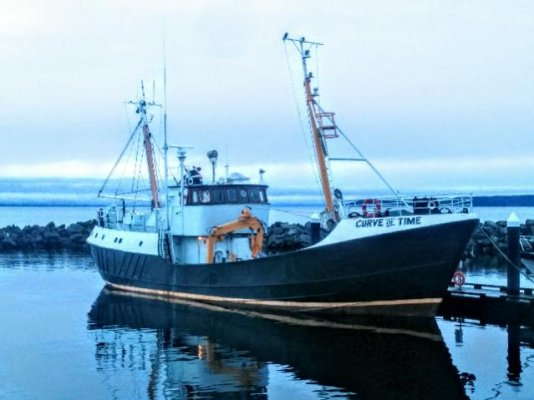Nomad Willy
Guru
Anyone with a 50+ ton full displacement vessel will tell you that there is hardly any difference in fuel economy or speed between light load and full load.
On Semi-displacement / planing hulls, weight is critical, since you have to transition from displacement to on top of the water and it takes horsepower to do that.
"hardley any difference" in a boats gros weight means hardly any difference on any size boat. It's basically directly porportional.








